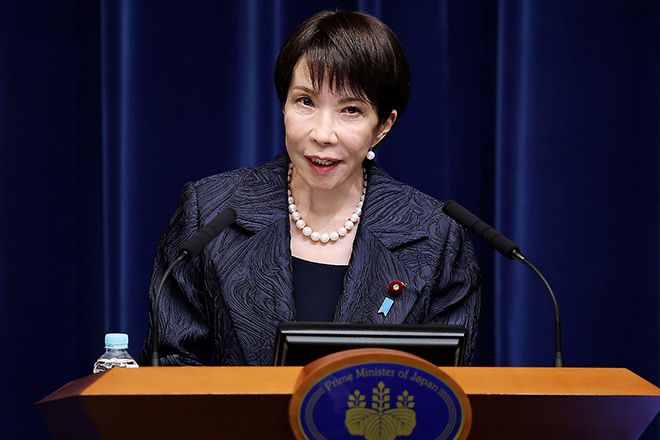With U.S. President Donald Trump due to visit just days from now, the new administration headed by Prime Minister Sanae Takaichi signaled its readiness to further increase defense spending.
Takaichi announced plans at an Oct. 21 news conference to move quickly on revisions to three key national security policy documents, with a view toward raising defense expenditures.
Coming ahead of Trump’s arrival, the move aims to demonstrate Japan’s proactive stance on defense investment.
The newly inaugurated Takaichi administration faces a packed diplomatic calendar.
Trump is scheduled to arrive on Oct. 27 and meet Takaichi for talks the following day. The meeting is expected to center on U.S.-Japan tariff negotiations and Japan’s defense budget increase.
“I hope to deepen mutual trust through candid discussions on the issues facing both countries,” Takaichi said.
Ideally, the administration would have had ample time to prepare, but the coalition negotiations in recent days delayed progress.
Even before Takaichi’s appointment as prime minister, senior officials from the Foreign Ministry repeatedly held study sessions at the ruling Liberal Democratic Party headquarters.
Nonetheless, the lack of preparation is evident.
A senior ministry official said, “When it’s time to act, we just have to do it.”
The three national security documents in question were formulated at the end of 2022.
They serve as a 10-year road map for Japan’s foreign and security policy and include the “national security strategy” and the “national defense strategy,” which set a target to raise defense spending to 2 percent of gross domestic product.
The “defense buildup program,” which outlines a five-year defense budget totaling 43 trillion yen ($284 billion) through fiscal year 2027, is also included.
This fiscal year’s initial budget for defense spending and related expenses reached 1.8 percent of the GDP ratio for fiscal 2022.
Regarding the accelerated revision of these documents, Takaichi said at the news conference that “the nature of warfare has changed significantly,” citing Russia’s invasion of Ukraine.
“I intend to issue instructions to begin the review process. Time is of the essence,” she said.
Revising the documents ahead of schedule implies moves are afoot to increase the defense budget beyond the current 2 percent of GDP target.
During the LDP leadership race, Takaichi pledged only to “begin reviewing” the documents.
However, with support from the pro-defense Nippon Ishin (Japan Innovation Party) in the coalition, she has now included “accelerated revision” in the coalition agreement.
The U.S. side has unofficially suggested that Japan raise its defense spending to 3.5 percent of GDP.
To avoid the impression that Japan is simply following U.S. demands, the administration is positioning the increase as a sovereign decision.
In her upcoming policy speech, Takaichi is expected to reference the accelerated revision and also convey this stance during her talks with Trump.
“I want to tell (Trump) that Japan will firmly enhance its defense capabilities,” she said.
Securing new financial resources to support the increase in defense spending will be a serious challenge, however.
Against the backdrop of weakening fiscal capacity, even the current 2 percent increase has led to delays in implementing income tax hikes that were expected to help fund the budget.


AloJapan.com